« back
Inclusive Development Index
 April 2017 / Kim Andreas Kessler, Academic Trainee, Quality Assurance and Poverty Reduction Section, Swiss Agency for Development and Cooperation (SDC)
April 2017 / Kim Andreas Kessler, Academic Trainee, Quality Assurance and Poverty Reduction Section, Swiss Agency for Development and Cooperation (SDC)
Inclusive Growth and Development
The call for inclusive economic growth is not new. Yet, in times of rising income inequality within many countries and political pressure emerging from so-called losers of the neoliberal globalization process, there is growing consensus on the need for socially-inclusive approaches to economic growth.
Under the overarching theme 'Responsive and Responsible Leadership', the World Economic Forum 2017 encouraged discussions around inequality and inclusive growth. This forum takes place on a yearly basis in Davos, Switzerland, and primarily brings together political and private sector leaders to work toward the forum's vision of improving the state of world.
The World Economic Forum Insight Report 2017 'Inclusive Growth and Development' aims to contribute to the endeavor of converting inclusive growth approaches into practice. The report offers a new policy framework and a set of indicators that support policy-makers and other development agents in fostering economic growth that results in sustained and broad-based living standards.
Key Argument
The WEF authors argue that policy-makers should recognize broad-based and sustained progress in living standards as the key measure for national economic performance, rather than GDP growth alone.
Policy Framework
The proposed policy framework consists of 7 pillars and 15 sub-pillars:
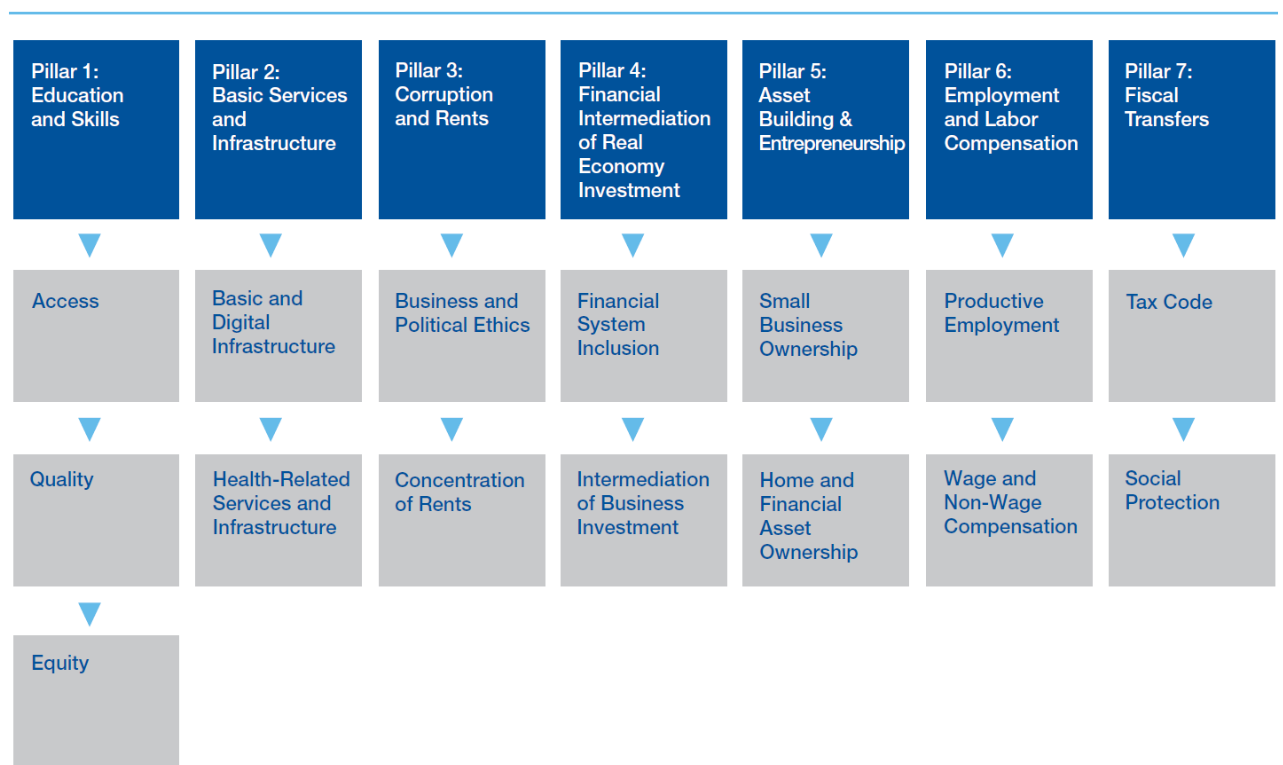
These pillars cover a range of structural factors that influence social participation and the process of economic growth. Illustrating a mechanism to achieve broad-based and sustained living standards, the framework represents an alternative way of thinking about structural reform. While conventional structural reforms usually tend to squeeze living standards, this framework combines demand- and supply-side measures in order to foster broad living standards
and to reinforce growth.
Policy and Institutional Indicators (PIIs)
The report contains 140 statistical indicators that enable comparison at pillar, sub-pillar and individual indicator level for each country. Data is available for 109 countries. These indicators allow the identification of an economy's capacity to combine economic growth and social inclusion.
Inclusive Development Index (IDI)
The report introduces National Key Performance Indicators (KPIs). Targeting broad based advancement of living standards, KPIs provide a more comprehensive view of national economic performance than GDP alone.
KPIs are combined to an Inclusive Development Index (IDI) which consists of 3 pillars:
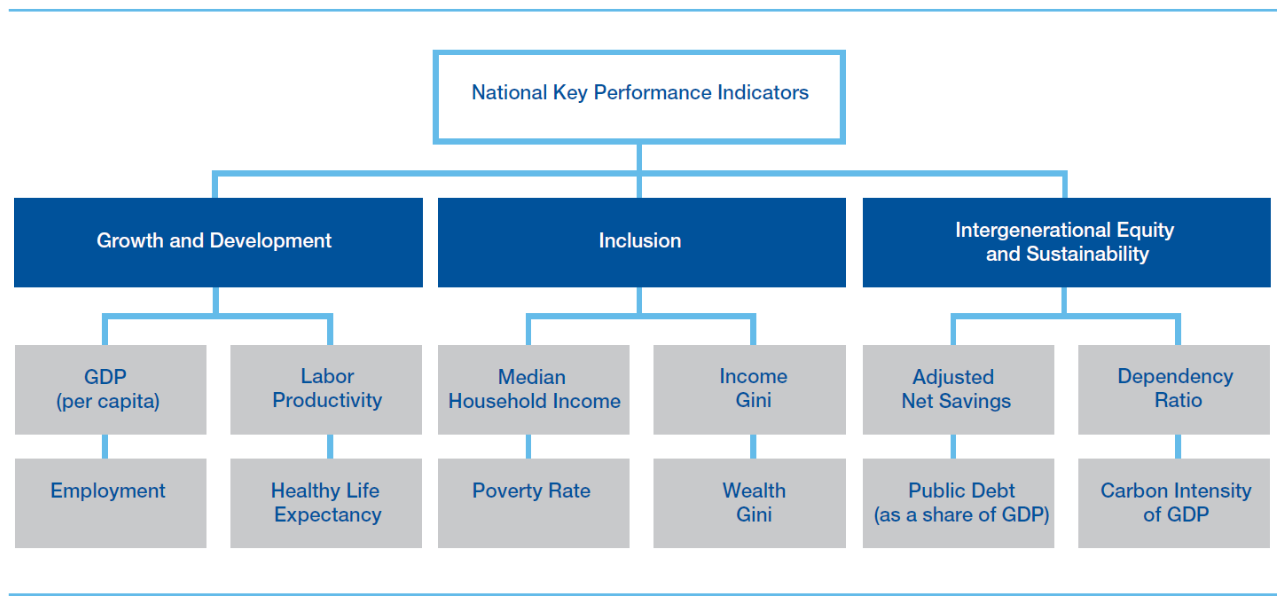
The Inclusive Development Index captures a more integrated picture of the relative state of economic development than GDP alone. A comparison between a country's IDI and GDP rank reveals to what extent economic growth has been inclusive.
Selected Results
- 51% of 103 countries saw IDI decline over past 5 years.
- Out of the 30 advanced economies listed, the United States presents the largest difference between its GDP per capita rank and its IDI rank.
- 18 out of 82 developing countries display an IDI score that is nine places or more higher than their GDP per capita ranking.
- 16 out of 82 developing countries show an IDI rank nine places lower than their GDP per capita ranking.
Table 1: Inclusive Development Index
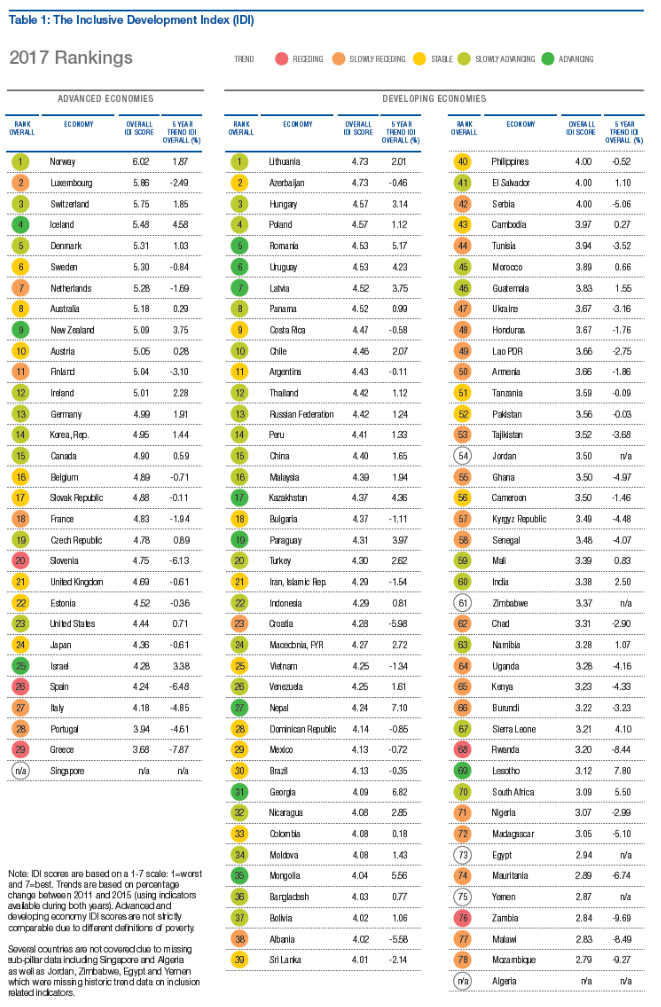
Table 2: Comparative Performance: IDI versus GDP
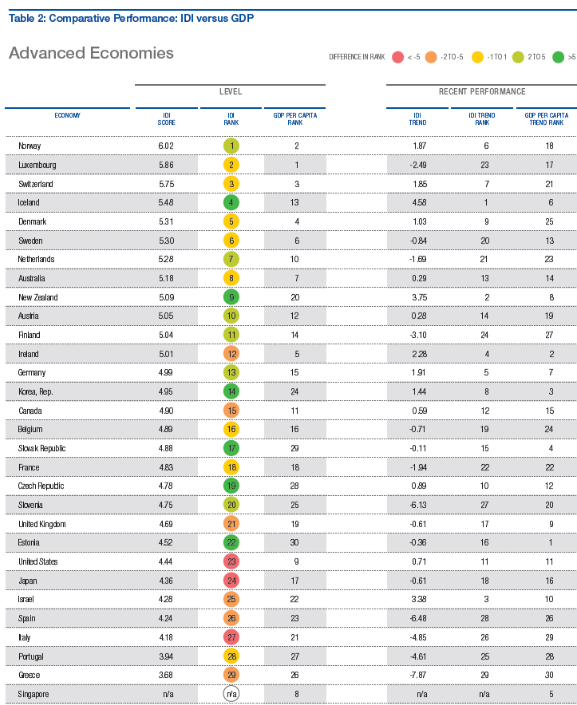
Table 3: Developing Economies IDI versus GDP
(part 1) (part 2)
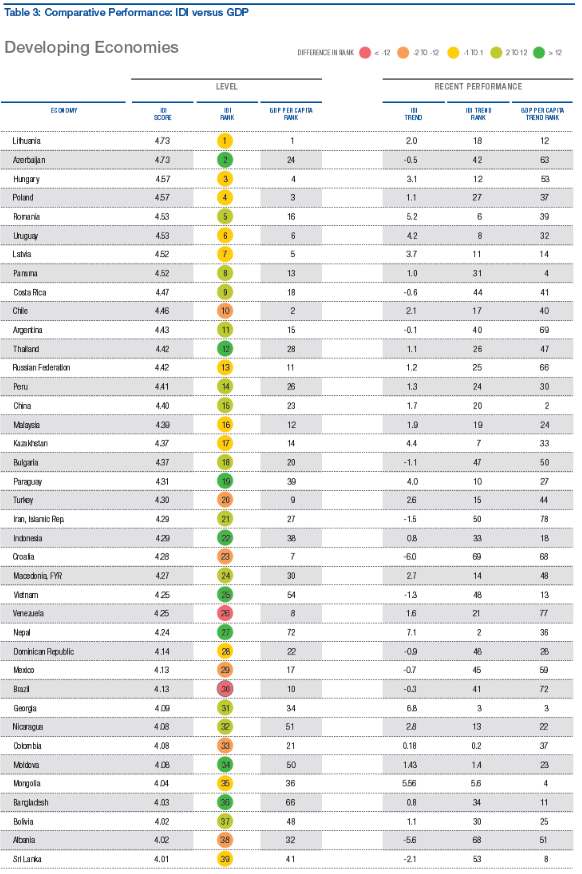
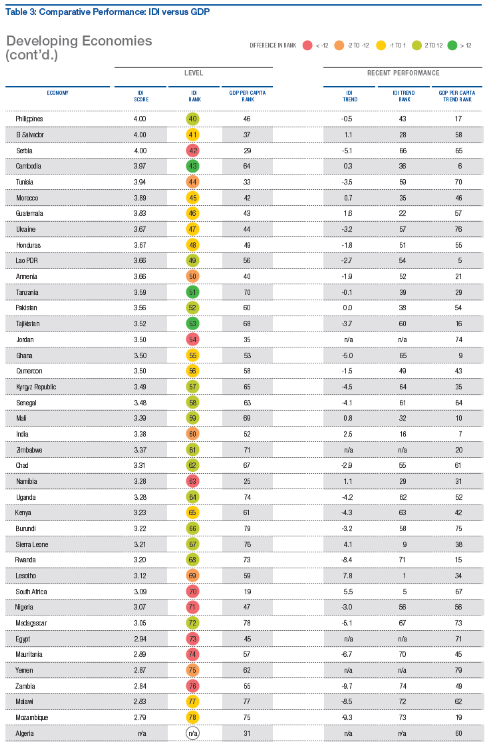
HDI, MPI, IDI
The well-established Human Development Index and the more recently developed Multidimensional Poverty Index both focus on health, education, and standard of living. The Inclusive Development Index adds inequality as an overarching dimension to these existing indices and further contributes to a multidimensional understanding of development. However, to strengthen the focus on inequality in development practice, the implementation of concrete policies needs to follow. The Inclusive Development Index provides a useful picture of the current situation on a country level and allows to measure progress made in reducing inequality.
For more information, click here:
https://www.weforum.org/agenda/authors/gemma-corrigan
To access the full report, click here:
https://www.weforum.org/reports/the-inclusive-growth-and-development-report-2017
